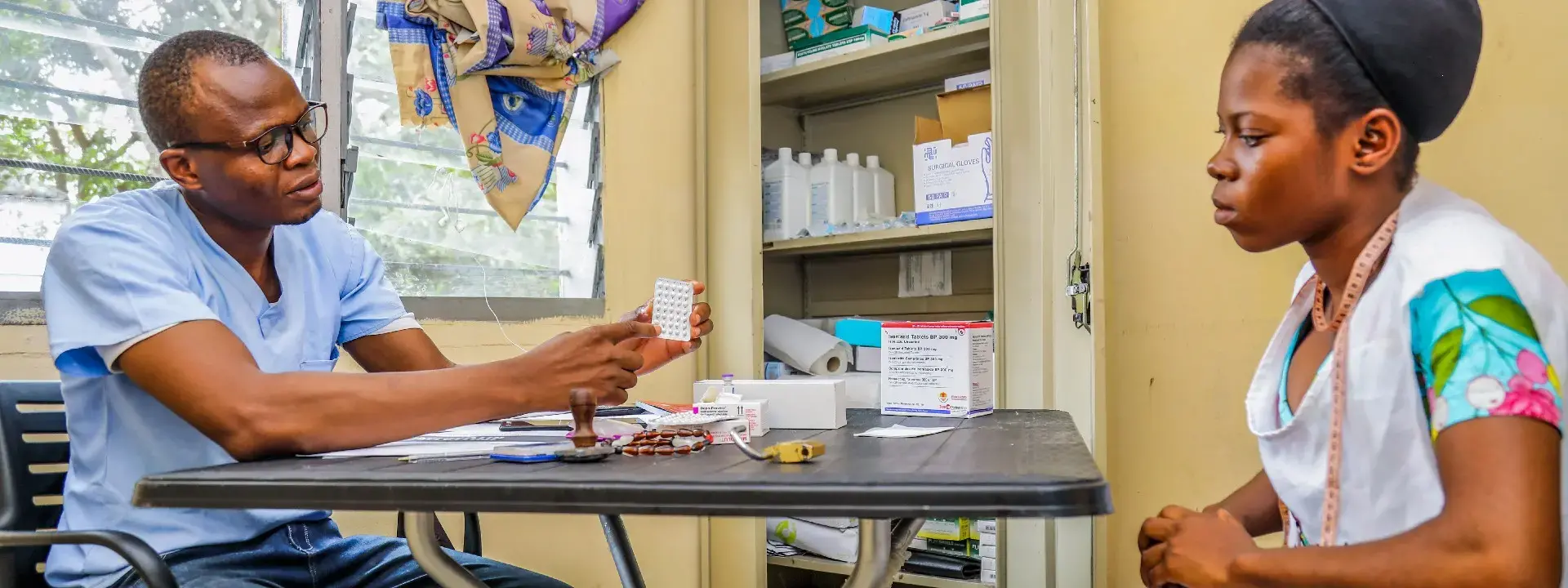The Democratic Republic of the Congo, with an estimated total population of 106 million, is the fourth most populous country in Africa after Nigeria, Ethiopia, and Egypt. It is the 15th most populous country in the world.
The annual growth rate is 3.2 percent, largely driven by a total fertility rate of 6.2 children per woman (United Population Division, 2022). The population is young, with approximately 66% of the population aged 0 to 24 and 32% aged 10 to 24.
The Congolese urban population increased from 35% in 2000 to 47.4% in 2023, representing an average annual growth rate of 4.1%, equivalent to more than one million additional urban dwellers each year. If this trend continues, more than 51% of Congolese will live in cities by 2030.
Despite significant investments and growing political commitments, this rapid urbanization is putting increasing pressure on infrastructure, particularly those related to health, education, and healthy living.
Progress in the implementation of Sustainable Development Goals in the DRC
Family Planning. As part of an effective partnership with UNFPA, capacity-building campaigns are being conducted with contraceptive technology providers to provide quality family planning services. These actions have led to significant improvements in contraception. The proportion of married or in-union women using a modern method of contraception has more than tripled. More than 28% of sexually active, unmarried women use modern contraceptive methods.
Investments in family planning for the period 2020-2030 would enable the DRC to achieve a contraceptive prevalence rate of 25.42%, compared to the current rate of 18%. The return on investment in family planning for the same period would be $19.7 billion.
Family planning remains a real challenge. More than 70% of married or in-partner women aged 15-49 do not use any method of contraception. Among those who do, more than 28% have unmet needs for contraception, both for birth control and for limiting births.
Maternal health. The DRC faces a major challenge in terms of maternal mortality. Despite a steady decline since 2015, the maternal mortality rate remains very high, standing at 547 per 100,000 in 2020, with 29% of deaths occurring among adolescent girls. At the current rate of progress, the DRC will not be able to achieve the target of 70 maternal deaths recommended by the 2030 Agenda. The Government has stepped up its efforts to ensure maternal health for all. Since 2022, maternity care has been free. 82.4% of pregnant women receive prenatal care (PNC), and more than 84% of pregnant women give birth with the assistance of qualified medical personnel. A growing number of hospitals are also being built in the country's 145 territories. Scaling up interventions based on the use of modern family planning methods, with the goal of covering just half of the unmet need for family planning, for the period 2020-2030, would prevent: 3.3 million unsafe abortions; 13.6 million unintended pregnancies; and 50,000 maternal deaths.
Education of women and girls. 12.64% of children are not enrolled in primary school, one-third of primary school children and three-quarters of secondary school children do not complete school. Classrooms are overcrowded, with an average of 41 students per teacher. The education system also faces persistent challenges in terms of the quality of education and job opportunities. The reform of free education extended to basic education in 2019: the number of newly enrolled students increased by 8%, from 3.74 million to 4.36 million students.
Very significant gains are expected: prevention of an average of nearly 2.7 million unintended pregnancies per year and a 50% reduction in the risk of HIV infection.
Youth employment. Abundant employment, with the working-age population representing an estimated 52% of the total population, for a population of nearly 100 million. A quarter of young people aged 15-24 are neither in the education system nor in employment.
On the macroeconomic front, the Government is working to diversify the economy. Endowed with significant agricultural potential, the Government is preparing, in collaboration with the AfDB and other financial partners, a large-scale national program to revive agriculture. Thousands of kilometers of agricultural access roads are under construction.
Gender equality. The revision of the Family Code in 2016 completed a long process of legal equality, but the implementation of the texts and the exercise of women's rights remain insufficient. Harmful practices against women and girls, such as forced and early marriage, and discriminatory social norms that disrupt the lives of those subjected to them.
Harmful effects on sexual health: Rape affects, among other things, the physical and bodily integrity of survivors. Only 31% of women in the DRC can make decisions regarding their sexual and reproductive health.
Effective Programming of the Demographic Dividend
Despite the development of a national SD roadmap, the DRC is currently only at the first stage of planning actions to harness the demographic dividend.
This first phase consists of establishing the country profile, the SD policy statement, and finally a gap analysis.
The second phase will follow, which will involve building partnerships, formulating the theory of change, and planning implementation.
The third and final phase involves implementation, monitoring and evaluation, and scale-up.
UNFPA is working closely with the DRC government to ensure the effectiveness of these various stages. UNFPA and the DRC Government are committed to the next steps in the process, which consists of:
- Finalizing provincial SD profiles
- Reviewing the SD implementation roadmap in line with the SDG acceleration roadmap, including the development of a monitoring and review framework for implementation
- Creating a Congolese Population Observatory or integrating the missions assigned to a population observatory into the Congolese Observatory for Sustainable Development (OCDD)
Finally, UNFPA is also working with the Congolese government to organize the Second General Population and Housing Census (RGPH2), which will help define basic social needs in order to anticipate appropriate solutions through large-scale national and international projects and programs. In addition, the Second General Population and Housing Census (RGPH2) will serve as a database for sampling units in intercensal surveys.


